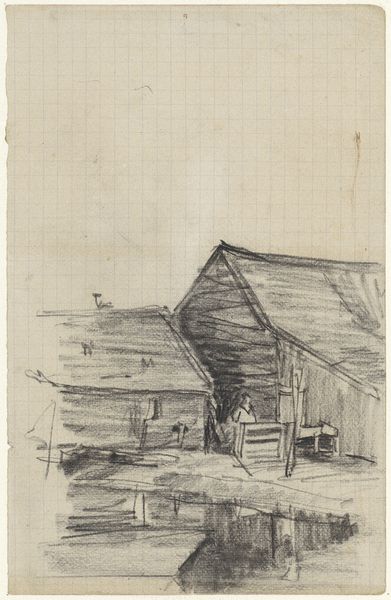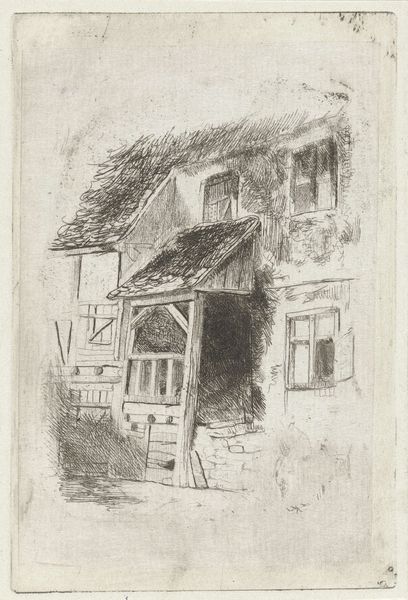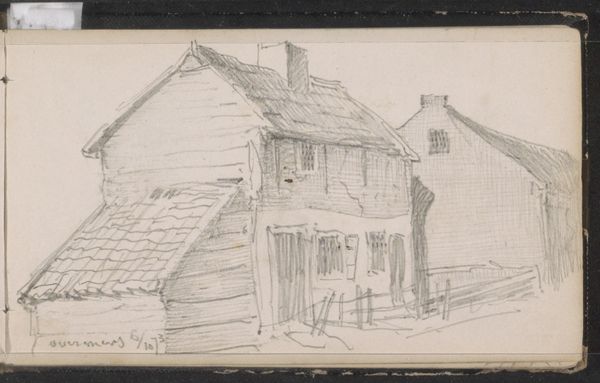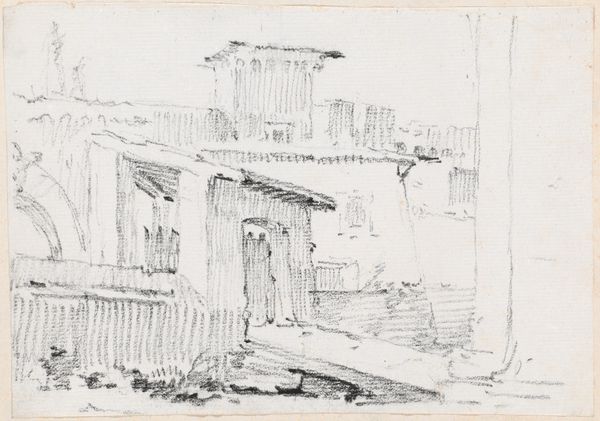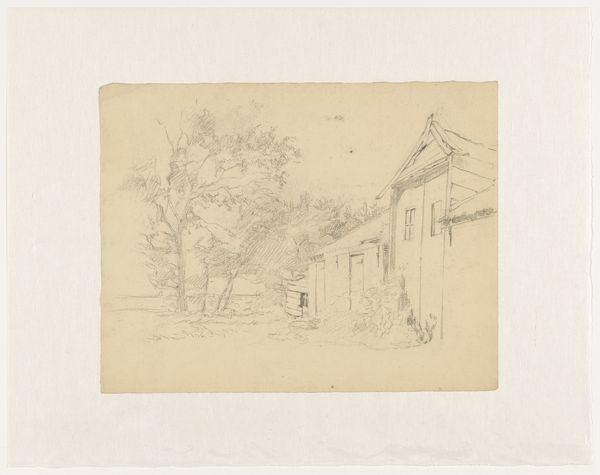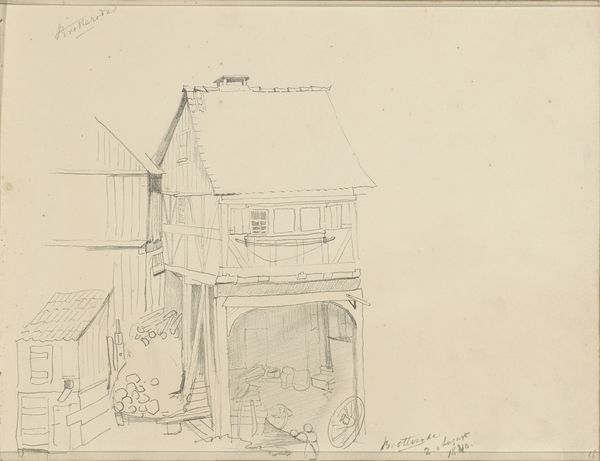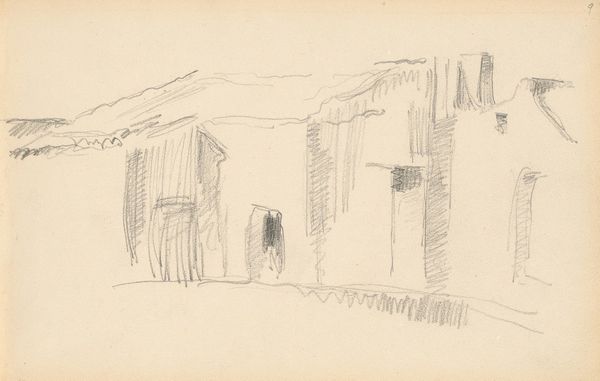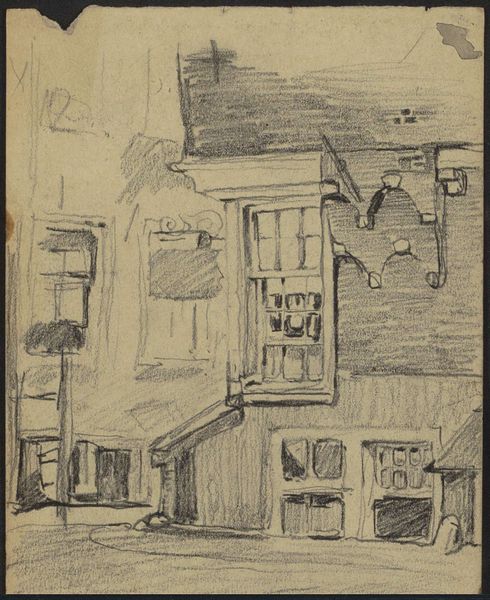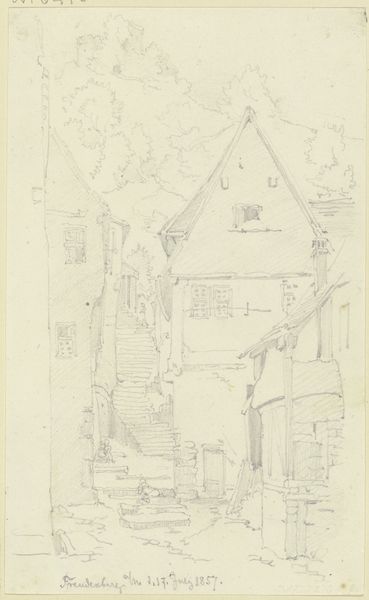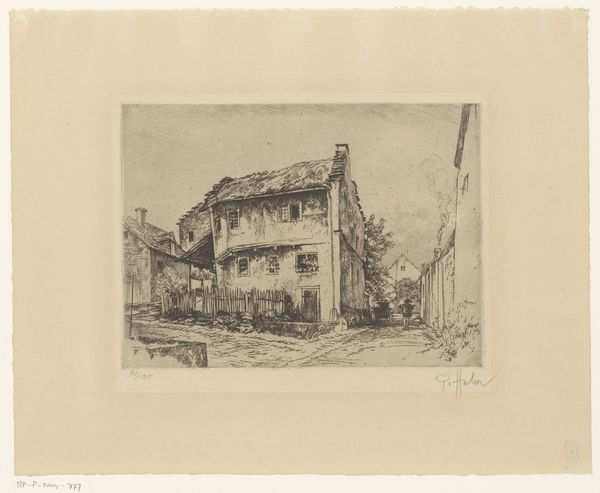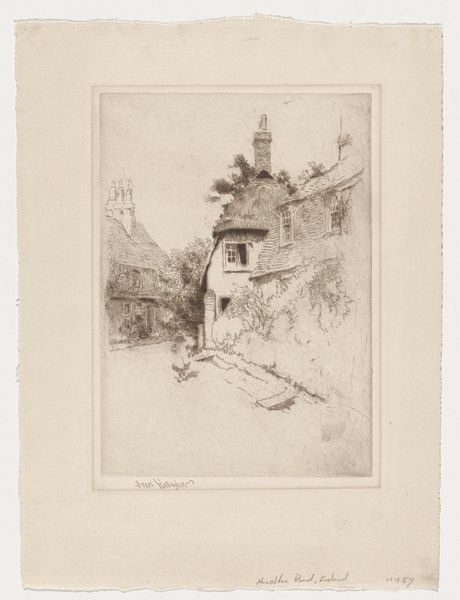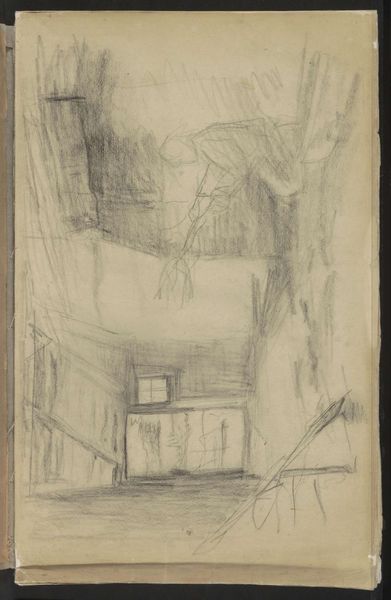
Copyright: Public Domain
Curator: Look at this pencil drawing by Louis Eysen, entitled "Balcony", created in 1882. The work offers an intriguing peek into a seemingly mundane scene, an architectural rendering if you will. Editor: It feels very fragile. Like a memory almost fading, captured with such delicate pencil strokes. You can almost feel the warmth of the sun on that balcony. Curator: Indeed. Let's consider the context of Romanticism in which Eysen was working. There's a deliberate turn to simpler, more intimate subjects after decades of history painting. I see it as a yearning for domesticity and personal space—almost a commentary on class distinctions. Editor: I'm struck by the materiality here. Eysen chose to represent stone and wood and tile with graphite on paper. The building feels humble, but the care and craft that goes into this pencil drawing suggest that there may be an affection for the simple structure, possibly an embrace of local, traditional modes of building, given that this was towards the later years of Romanticism. Curator: I think so. It’s also important to consider the viewpoint here, which positions the viewer slightly below the balcony. It almost hints at a sense of aspiration or longing from the street level. One might ponder, who occupies that space and what might that space signify? Editor: And the perspective itself! Look how Eysen uses crosshatching and careful line work to suggest volume and texture, not just describing what’s there but also capturing the sensation of sunlight hitting rough surfaces. He understood the limitations of his tools, using his pencil almost like he's carving material from the page. Curator: A fine point. We also see the subtle shadows that create such dimension to what would otherwise be a very ordinary balcony scene. A closer inspection shows how very considered even the subtlest shadows are rendered to ground the architecture in a lived place, and in a specific moment. Editor: Well, this look into the art production here does add depth to our discussion about his art's historical significance and place within Romanticism. It certainly feels different now than it did upon first seeing the artwork, especially knowing now how intentionally its design may be to show this intersection of craft and nature. Curator: Yes, exploring its historical place enriches our understanding. Editor: I agree, indeed a striking demonstration.
Comments
No comments
Be the first to comment and join the conversation on the ultimate creative platform.
